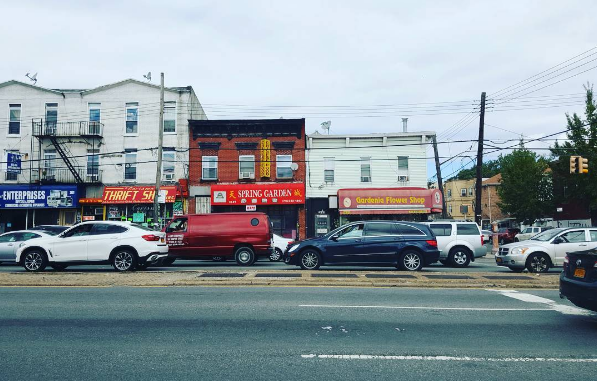
This image shows a streetscape of traffic and 3-5 story commercial buildings on Atlantic Avenue. This busy thruway marks the border between Cypress Hills and East New York, and serves as a major commercial street and commuter artery for the communities. Image Credit: Kristen Hackett
In the Fall of 2016, I was invited to teach an Environmental Psychology Course at the The New School. As an PhD student in an Environmental Psychology Program, I was thrilled – excited to compose a course that shared the theoretical perspective that had become home to me, and to share my research and interests on Environmental Psychology with students. In addition to introducing them to the syllabus and requirements of the course, in the first couple of weeks, I also introduced them to the ‘Walking in My Shoes’ Project, which was narrowly conceived at the time as a oral history project take place in and with residents of East New York and Cypress Hills.
Below is a draft of the syllabus and a draft of the WIMS project proposal I shared with the class in those first few weeks.
[gview file=”http://opencuny.org/walkinginmyshoes/files/2016/10/EnvPsych-Syllabus-Fall-2016-FINAL-9-28-16.pdf”]
[gview file=”http://opencuny.org/walkinginmyshoes/files/2016/10/‘Walking-in-My-Shoes’-Student-Version.pdf”]
